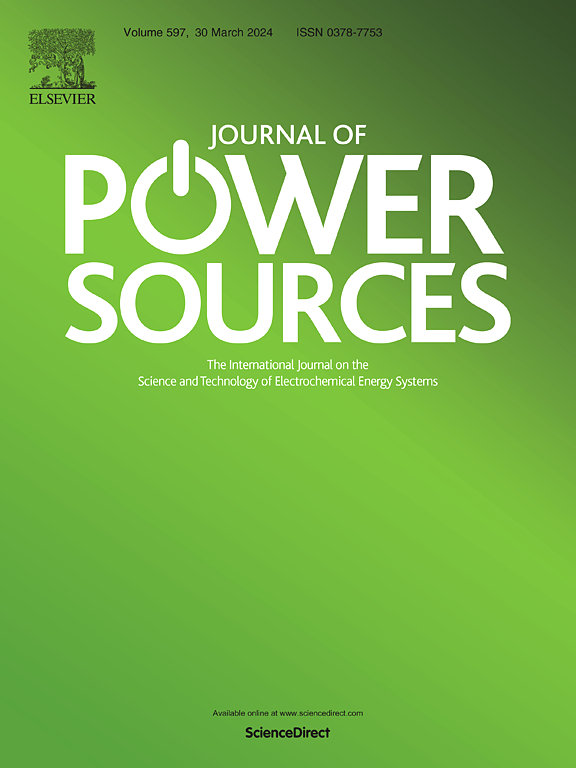Digital correlation analysis and optimization of microporous layer through a machine learning workflow for PEMFC applications
IF 8.1
2区 工程技术
Q1 CHEMISTRY, PHYSICAL
引用次数: 0
Abstract
The Microporous Layer (MPL) plays a crucial role in Proton Exchange Membrane Fuel Cells (PEMFCs), as it influences the overall transport properties within these devices. This study introduces a novel Machine Learning (ML) approach to optimize the MPL microstructure and properties. Synthetic datasets were generated by considering key manufacturing parameters, including Carbon Particle (CP) diameter, CP Solid Volume Percentage (SVP), and polytetrafluoroethylene (PTFE) SVP, and used to calculate MPL output properties such as relative diffusivity, thermal conductivity, and electrical conductivity. Our ML framework achieved an R2 score of 0.92, with a decrease in computational time for predicting MPL properties from ∼1 h (using physics-based methods) to ∼7 s (using the ML model). Finally, the optimizer suggested a low solid weight % (carbon and PTFE) for maximum diffusivity, while high carbon SVP and low PTFE SVP for maximum conductivities. Among the three evaluated MPL output properties, the electrical conductivity and relative diffusivity are consistent with experimental literature. In contrast, thermal conductivity is one to two orders of magnitude higher than experimental values. This discrepancy is difficult to assess because of the significant dispersion of experimental data found in the literature, which may arise from different manufacturers, fabrication methods and measurement techniques.
基于机器学习工作流的PEMFC微孔层数字相关分析与优化
微孔层(MPL)在质子交换膜燃料电池(pemfc)中起着至关重要的作用,因为它影响着这些设备内的整体传输特性。本研究引入了一种新的机器学习(ML)方法来优化MPL的微观结构和性能。通过考虑关键制造参数,包括碳颗粒(CP)直径、CP固体体积百分比(SVP)和聚四氟乙烯(PTFE) SVP,生成合成数据集,并用于计算MPL输出性能,如相对扩散系数、导热系数和导电性。我们的ML框架的R2得分为0.92,预测MPL特性的计算时间从1小时(使用基于物理的方法)减少到7秒(使用ML模型)。最后,优化器建议低固体重量%(碳和PTFE)可获得最大的扩散系数,而高碳SVP和低PTFE SVP可获得最大的电导率。在三种评估的MPL输出特性中,电导率和相对扩散率与实验文献一致。相反,热导率比实验值高一到两个数量级。这种差异很难评估,因为在文献中发现的实验数据存在显著的分散,这可能来自不同的制造商、制造方法和测量技术。
本文章由计算机程序翻译,如有差异,请以英文原文为准。
求助全文
约1分钟内获得全文
求助全文
来源期刊

Journal of Power Sources
工程技术-电化学
CiteScore
16.40
自引率
6.50%
发文量
1249
审稿时长
36 days
期刊介绍:
The Journal of Power Sources is a publication catering to researchers and technologists interested in various aspects of the science, technology, and applications of electrochemical power sources. It covers original research and reviews on primary and secondary batteries, fuel cells, supercapacitors, and photo-electrochemical cells.
Topics considered include the research, development and applications of nanomaterials and novel componentry for these devices. Examples of applications of these electrochemical power sources include:
• Portable electronics
• Electric and Hybrid Electric Vehicles
• Uninterruptible Power Supply (UPS) systems
• Storage of renewable energy
• Satellites and deep space probes
• Boats and ships, drones and aircrafts
• Wearable energy storage systems
 求助内容:
求助内容: 应助结果提醒方式:
应助结果提醒方式:


